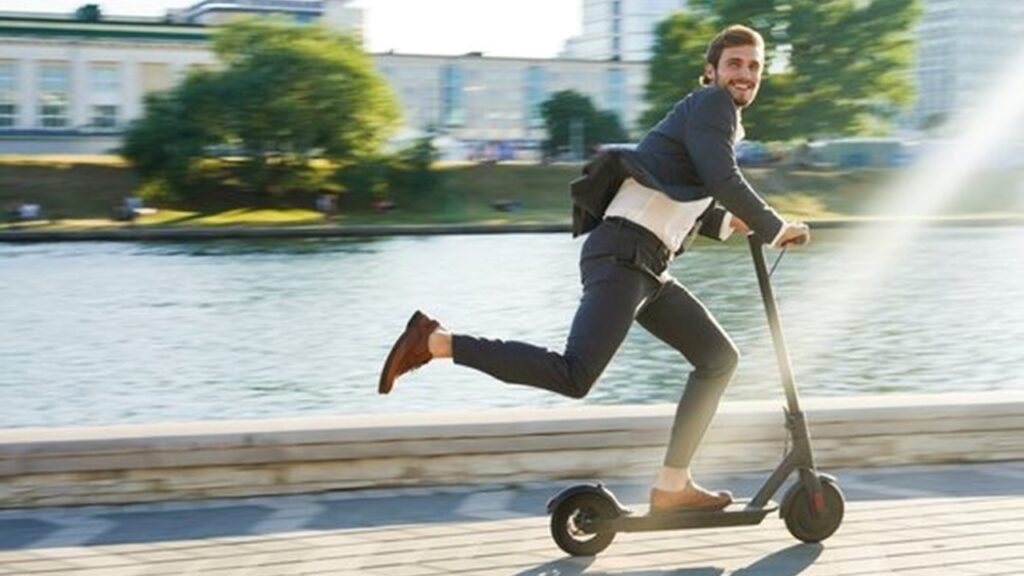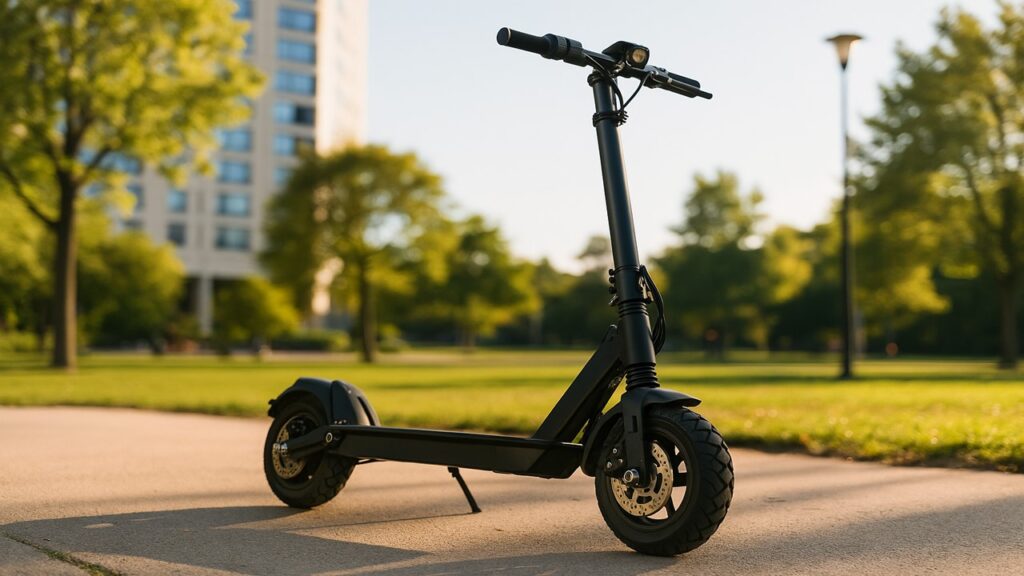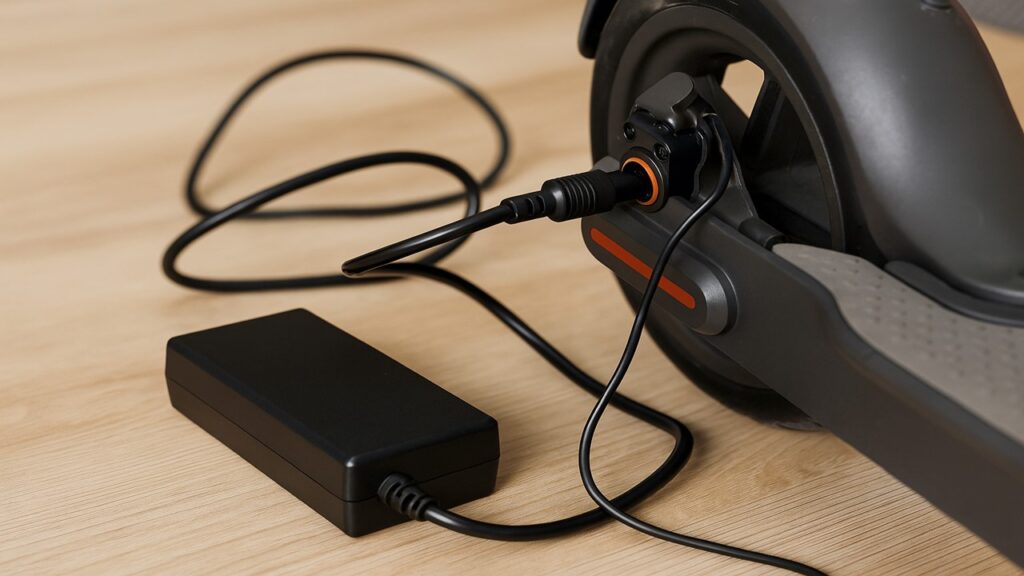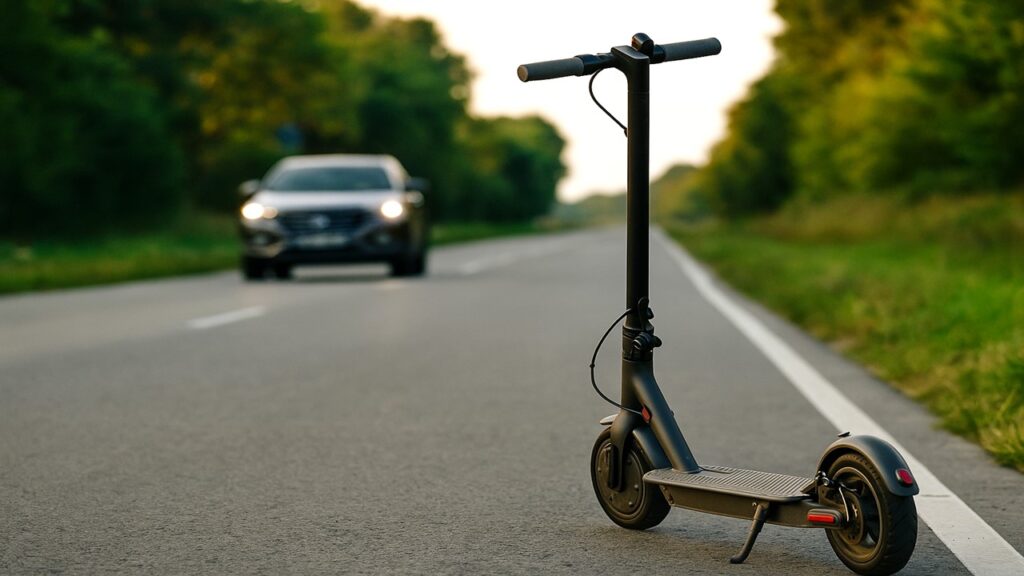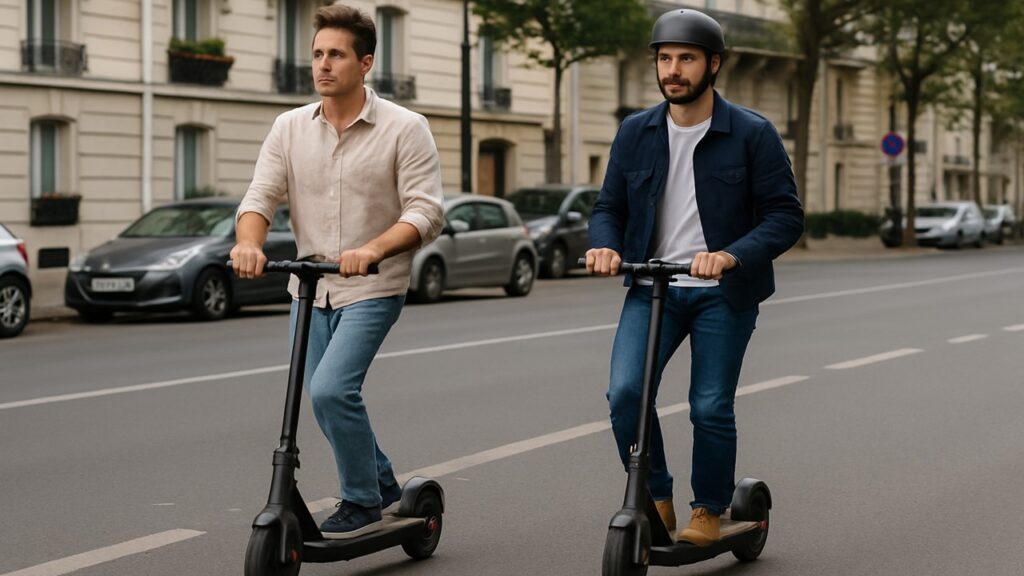
Whether it’s illegal to ride an electric scooter without a helmet depends entirely on where you live. Helmet laws vary widely across countries, states, and even cities, with most places requiring helmets for minors but only recommending them for adults. To stay safe and avoid fines, it’s essential to know what your local rules say before you ride.
Key Summary:
- Helmet laws for electric scooters differ across countries, states, and even cities, with most regions requiring helmets for minors but only recommending them for adults.
- Fines for riding without a helmet typically range from $25 to $200, and repeat violations can lead to higher penalties or safety course requirements.
- Not wearing a helmet can reduce or void insurance coverage for injuries, as many providers classify it as preventable negligence.
- Even when not legally required, helmets remain essential for safety—reducing head injury risk by more than 80% and saving lives in serious accidents.
Is It Actually Illegal to Ride an Electric Scooter Without a Helmet?
Electric scooter helmet requirements are not universal. Some regions make helmets mandatory for everyone, while others enforce them only for younger riders. In the United States, laws are mostly decided at the state or city level. For example, California and New York require helmets for anyone under 18, while states like Texas and Florida let adults ride without one unless local ordinances say otherwise.
In many European countries, wearing a helmet is recommended but not enforced by law, whereas in India and Australia, it’s compulsory nationwide. Regardless of what’s required, authorities worldwide emphasize that helmets drastically reduce serious head injuries in scooter accidents and remain the single best way to stay safe on the road.
It’s illegal to ride an electric scooter without a helmet in many regions, especially if you’re under 18 or in a city with local helmet mandates. Adults can often ride without helmets where permitted, but laws differ by location. Always check your city or state regulations before riding.
Related Blog: Is It Legal to Ride an Electric Scooter on the Sidewalk?
Understanding Electric Scooter Helmet Laws
Electric scooter helmet laws exist to reduce head injuries and promote safe riding, but there is no single law that applies everywhere. Instead, each country and local government sets its own rules depending on how electric scooters are classified—some treat them like bicycles, while others see them as motorized vehicles.
In the United States, there’s no federal law regulating e-scooter helmet use. States and municipalities have full control over these regulations, meaning the rules in Los Angeles can differ entirely from those in Dallas or Seattle. In places like Canada or Europe, helmet rules often depend on speed limits, rider age, or specific city trials.
Understanding how these regulations are created helps riders avoid penalties. It also highlights the importance of checking current laws regularly since e-scooter legislation continues to evolve as cities adapt to growing micromobility use.
Electric Scooter Helmet Laws in the United States
Electric scooter helmet laws in the U.S. differ greatly depending on where you ride. Most states require helmets for minors under a certain age, while others let adults choose. A few states or cities enforce universal helmet rules for all riders.
Key points to remember:
- There is no federal law requiring helmets; rules are local or state-specific.
- Minors are required to wear helmets in almost all states.
- Adults can ride without helmets in many areas but may face local restrictions.
- Fines range from $25 to over $100, depending on location.
Below are examples of how helmet rules differ across the country.
California, New York, Florida, Oregon, and Michigan
California and New York require helmets for riders under 18. Florida enforces them only for those under 16. Oregon mandates helmets for anyone under 16 statewide, extending to 18 in school zones, while Michigan sets its limit at under 19. Violations can lead to small fines, though enforcement varies by city.
States with Universal Helmet Requirements
Washington is among the few states requiring helmets for all e-scooter riders, treating scooters like bicycles under its helmet law. Some cities, such as Seattle and Los Angeles, extend mandatory helmet rules to all ages, particularly in downtown areas or during special events.
States Allowing Adults to Ride Without Helmets
In Texas, adults can legally ride helmet-free in most areas, though some cities, including Austin, have stricter local mandates. Similar flexibility exists in Arizona and Colorado, where local governments decide whether helmets are compulsory. These regions still strongly recommend helmets even when not legally required.
Local Ordinances and City-Level Rules
City regulations can override state laws. Austin mandates helmets for rental scooter users, Miami enforces them for shared scooters, and San Francisco adds helmet zones in high-traffic districts. Riders who ignore local rules may receive fines or lose access to rental accounts.
Quick-Reference U.S. Helmet Law Table
| State | Helmet Required | Age Limit | Typical Fine | City Overrides |
| CA | Yes | Under 18 | $25 | SF, LA stricter |
| TX | Varies | Local | $25–75 | Austin mandates |
| FL | Minors only | Under 16 | $30 | City options |
| WA | Yes | All riders | $124 | — |
| NY | Yes | Under 18 | $50–100 | NYC pilot zones |
Helmet Laws Around the World
Electric scooter helmet rules differ widely depending on the country. Some, like India and Australia, have strict nationwide mandates, while others, such as the UK or Germany, leave it up to the rider. Fines also vary—from small penalties in Canada to significant amounts in Europe for violating child helmet laws.
Global snapshot:
- India: Helmets are mandatory for all riders under traffic law.
- UK: Helmets are recommended but not required.
- Germany/France: Helmets optional for adults, required for children.
- Canada: Laws differ by province; British Columbia enforces them.
- Australia/New Zealand: Universal helmet requirement for public road use.
Understanding international differences helps riders traveling abroad comply with local laws and avoid fines. Even in countries where helmets are optional, governments consistently promote them as vital safety gear to prevent severe head injuries.
Global Helmet Law Comparison Table
| Country | Legal Requirement | Fine | Notes |
| India | Mandatory | ₹500–₹1000 | All scooters |
| UK | Not mandatory | — | Recommended |
| Germany | Optional | €0 | Strongly advised |
| France | Under 12 | €90 | Often extended |
| Canada | Province-specific | $50–$150 | BC mandatory |
What Happens If You Ride Without a Helmet?
Riding an electric scooter without a helmet can lead to legal penalties, fines, and even restrictions on rental scooter accounts. The specific consequences depend on where you’re riding.
Common penalties include:
- Fines: Most cities charge between $25 and $200 for violations.
- Warnings: First-time offenders may receive verbal or written warnings.
- Safety Courses: Some areas let riders complete short safety training instead of paying fines.
- Parental Liability: Parents can be fined if minors ride without required helmets.
- Rental Restrictions: Shared scooter companies may suspend accounts for violations.
These penalties aim to reduce head injuries and encourage safer riding habits. In some states, repeat offenders face higher fines or mandatory court appearances, while a few cities even tie penalties to traffic records. Local enforcement is becoming stricter as e-scooter use increases in urban areas.
Insurance and Liability Impact
Not wearing a helmet during an e-scooter accident can affect your insurance coverage. Many insurers treat it as negligence, which reduces or voids claims.
Coverage consequences:
- Health insurance: May reduce payouts by 25–50% for preventable injuries.
- Auto insurance: Typically excludes e-scooter accidents unless specifically covered.
- Liability claims: Courts can assign partial fault, lowering compensation.
- Workers’ compensation: Often denies claims if injuries occur during illegal or noncompliant riding.
When riders break helmet laws, insurers may refuse coverage altogether, arguing that the injury was avoidable. This leaves the rider responsible for medical bills, property damage, or liability costs if others are involved. Always check your policy terms before riding.
Quick-Glance Table: Insurance Impact by Policy Type
| Insurance Type | Coverage Impact | Reduction Amount | Legal Risk |
| Health Insurance | May reduce or deny | 25–50% | Medical debt |
| Auto Insurance | Often excluded | 100% | No payout |
| Liability Coverage | Compensation reduced | 10–40% | Partial fault |
| Workers’ Compensation | May deny benefits | 50–100% | Ineligible claim |
Why Helmets Matter (Safety Data and Real-World Statistics)
ChatGPT said:
Helmets play a critical role in preventing life-threatening head injuries. Even at moderate e-scooter speeds, a fall can cause severe trauma, especially considering how fast an electric scooter can go—many models reach 15 to 30 mph, fast enough to cause serious harm in a crash.
Safety highlights:
- Helmets reduce head injury risk by 85%.
- Concussion risk drops by 70% when wearing a helmet.
- Facial injuries decrease by 60% with full-face models.
- Brain injuries are the most common cause of fatal e-scooter accidents.
Injury Risk Comparison Table
| Injury Type | Risk Reduction | Avg. Medical Cost | Recovery Time |
| Brain Injury | 85% | $100,000–$500,000 | 6 months–lifetime |
| Skull Fracture | 90% | $50,000–$150,000 | 3–6 months |
| Concussion | 70% | $5,000–$25,000 | Weeks–months |
| Facial Injury | 60% | $10,000–$50,000 | 1–3 months |
Even in low-speed crashes, helmets can prevent lasting brain damage or disability. Most fatalities in e-scooter accidents involve riders who weren’t wearing protective gear.
Choosing the Right Helmet for Legal Compliance
Picking a helmet that meets legal and safety standards ensures both protection and compliance with local regulations.
Helmet Type Comparison Table
| Helmet Type | Certification | Legal Compliance | Best Use |
| DOT Motorcycle | DOT | High-speed scooters | Long-distance rides |
| CPSC Bicycle | CPSC | Legal in most states | Urban commuting |
| SNELL Certified | SNELL | Premium compliance | Maximum protection |
| Skate/Urban | None | Limited | Casual, low-speed use |
For the best protection, the helmet should fit snugly without pressure points. The strap must stay tight enough to prevent movement but not restrict breathing. Choose helmets with reflective surfaces or bright colors for night visibility. Replace your helmet every five years or immediately after an impact, even if damage isn’t visible.
Future Helmet Law Trends
Cities and states are tightening e-scooter helmet laws in response to rising accident rates. New legislation focuses on consistency, safety tech, and enforcement.
Emerging trends include:
- Universal helmet mandates: More cities are moving toward all-age requirements.
- Smart helmets: Models with lights and turn signals may become legally encouraged or required.
- AI-based enforcement: Cameras and sensors can detect riders without helmets.
- Public health programs: Cities now distribute free helmets to encourage compliance.
- Corporate accountability: Rental companies are increasingly fined for user violations.
Lawmakers view helmets as the simplest way to reduce medical costs and improve rider safety, so broader enforcement is expected in the next few years.
Final Thoughts
Electric scooter helmet laws vary by region, but the message everywhere is clear: helmets save lives. Even where it’s not legally required, wearing one protects you from severe injury, financial loss, and legal trouble. Check local rules before each ride, invest in a certified helmet that fits properly, and replace it as needed. Safe riding habits and awareness of helmet regulations ensure every trip stays enjoyable and risk-free.
FAQs
Can adults ride electric scooters without helmets?
In most places, yes—but local rules may differ. Many cities now require helmets for all riders, regardless of age.
What’s the fine for riding without a helmet?
Fines usually range from $25 to $200, depending on your state or city’s enforcement policy.
Do helmet rules apply to private scooters?
Yes. Helmet laws apply to both personal and rental e-scooters unless a local exception is stated.
Will insurance cover injuries if I wasn’t wearing a helmet?
Some insurance plans may deny or reduce coverage for injuries sustained during helmet law violations.
Are helmet laws getting stricter?
Yes. Many regions are expanding helmet requirements and using technology to monitor compliance.

Max Volt is an electric scooter and e-bike enthusiast who rides daily and knows the nuts and bolts of every model. With years of hands-on repair experience and real-world testing, Max shares practical reviews, maintenance tips, and buyer guides to help riders choose the right gear with confidence. His mission is to make electric commuting safer, smarter, and more enjoyable for everyone.




